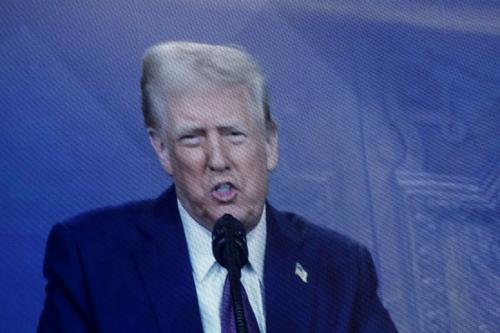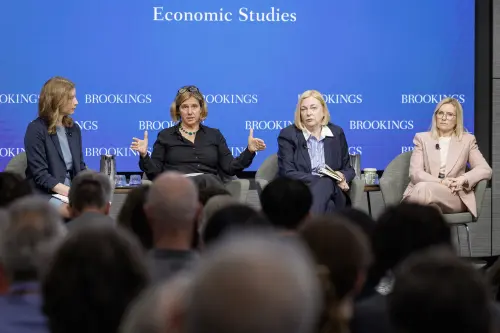Perhaps the only silver lining to the Great Recession is that it triggered a new focus on manufacturing in the United States. After 25 years of being sold a shiny vision of a service-dominated post-industrial economy, the U.S. is rediscovering how important it is to actually make things in order to spur innovation, raise wages, drive exports and lower the trade deficit.
Corporate cost calculations undergird the newfound appreciation of U.S. manufacturing. The offshoring of manufacturing was rooted in harsh economic realities: rock-bottom wages in nations such as China and the aggressive attraction and infrastructure strategies of foreign governments. Yet labor costs are rising in China, and concerns persist about the protection of American intellectual property there. Energy can be cheaper here, and more reliable. The tsunami in Japan, supplier of many high-tech components, revealed the fragility of far-flung supply chains for many U.S. companies.
As corporations reevaluate their bottom lines, national leaders must reassess the critical role of manufacturing. Its jobs pay 20% more on average than non-manufacturing work and are more likely to provide benefits. It employs a disproportionately high number of less-educated workers and tends to spark job growth in service-based industries. And, in the words of Andrew Liveris, chairman and CEO ofDow Chemical Co.: “Where manufacturing goes, innovation inevitably follows.”
That reality has cost the U.S. dearly. In the electronics sector alone, 90% of R&D now occurs in Asia, in large part because of the steady offshoring of manufacturing by U.S. companies since the 1980s. That must not happen in other advanced industries.
And it doesn’t have to. The key to reviving manufacturing and exports in the U.S. can already be found in metropolitan areas like Los Angeles and Chicago.
The phrase “urban manufacturing” evokes images of a sooty skyline, cramped sweatshops or the massive automotive assembly lines of mid-20th century Detroit. But urban manufacturing today involves small, specialized firms that rely on advanced technology and workers with different skill sets than in the past.
In Torrance, for example, Pelican Products produces high-performance protective cases and portable lighting equipment used by law enforcement and the defense, aerospace and entertainment industries. In 2010, Pelican employed 600 people at its home-base Torrance facility. (It has four other plants — two more in the U.S. and two in Europe.) Pelican sells products to more than 100 countries. In the last two years, its export sales have grown 25%, driven by demand in Europe and Asia.
As other companies chased low-wage labor by offshoring manufacturing capacity, Pelican chose to remain primarily in the U.S. In Torrance, it could readily benefit from a skilled workforce and a strong and flexible supply chain. Pelican’s 12-year relationship with neighboring Victory Foam highlights the benefits of proximity to suppliers. Victory provides Pelican with next-day order fulfillment, which greatly reduces the time required for production. Daily interactions between the two companies allow for rapid adjustments to meet market demands while providing opportunities for collaboration on new products. Together, these firms are key components of a thriving regional innovation and manufacturing ecosystem.
These are the sorts of ripple effects and mutual benefits that only cities, with their density and diversity, can supply. As one industry feeds another, productivity improves, entrepreneurship is encouraged and employment and wages increase in the region.
What do firms like Pelican need to thrive? It’s not rocket science.
A functioning federal government matters. It can deliver the big stuff: enhancing access to foreign markets, enforcing trade agreements and protecting intellectual property. It can also provide expertise on emerging markets through U.S. consulates, help match firms with potential customers, provide export promotion support and commit resources to modernizing key logistics hubs like the ports of Los Angeles and Long Beach.
Local governments and institutions also have a role to play in recharging American manufacturing and creating a more prosperous economy.
Small and medium-sized manufacturing firms need a steady supply of skilled workers that can be supplied by local community colleges and even specialty high schools that reinvent vocational education for a new century.
Firms also need a safe, stable place to do business. Chicago met this demand by creating industrial districts. Supported by financing based on the tax increases that redevelopment would bring, the city secured industrial land from rezoning and invested in infrastructure to improve freight transport.
Finally, firms need business advice close to home and more connections abroad. In Los Angeles, the USC and UCLA business schools have given Pelican access to MBA students, who are designing a distribution system for the company’s booming trade with China and other Asian nations. This is a model partnership that needs to be replicated.
U.S. cities and metropolitan areas still possess significant manufacturing capability and, by extension, innovation capacity. A rich industrial heritage has endowed American cities and metros with the companies, skilled workers, educational and advanced research institutions, and production strength essential for moving toward a new economic vision.
The Great Recession was a wake-up call to the nation. Let’s heed it.
The Brookings Institution is committed to quality, independence, and impact.
We are supported by a diverse array of funders. In line with our values and policies, each Brookings publication represents the sole views of its author(s).



Commentary
U.S. Manufacturing’s Next Phase
May 9, 2012